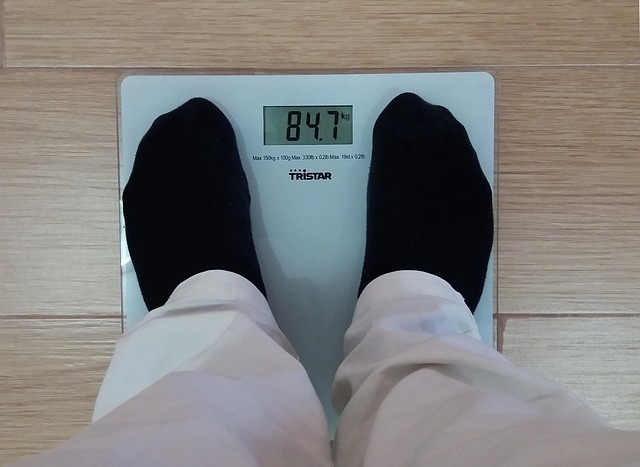A vegan diet is one in which no animal products or foods are consumed. Fruits, vegetables, grains, nuts, seeds, and soy products are all part of a vegan diet, but no meat, seafood, poultry, dairy, eggs, or honey are allowed.
Moving from an omnivore eating style (with little dietary limitations) to a more stringent plan, such as the vegan diet, can be difficult. As a result, many nutrition experts recommend a gradual approach.
Some people, for example, find success on a vegan diet by first adopting a flexitarian diet, type of vegetarian diet that permits you to eat meat sometimes. After you’re comfortable with the flexitarian eating approach, you can transition to a vegetarian diet and then to veganism.
The “add first, delete later” strategy is another approach that may aid with the changeover. Using this strategy, you begin by adding tasty vegan items to your menu before eliminating non-compliant foods. When your vegan eating plan has a solid base, you eliminate the foods you are most reliant on last.
Whatever technique you choose, remember to give yourself time while beginning this dietary regimen. A vegan diet can give you several health benefits, but depending on where you start, learning how to purchase, cook, and fully enjoy vegan meals may take weeks, months, or even years.
Your Calorie Objectives
According to studies, persons who follow a vegan diet consume fewer calories than those who follow other types of diets.
This calorie reduction usually occurs spontaneously since foods removed from a vegan diet are high in fat and calories, such as red meat and high-fat dairy. As a result, adopting this eating habit may result in weight loss.
But, if you are already at a healthy weight when you go vegan, you will need to ensure that you consume enough calories each day to stay healthy. Eating too few calories might result in fatigue, muscle loss, and other issues.
And, of course, eating too many calories can lead to weight gain regardless of diet. Even while vegan diets are fewer in calories, it is still easy to gain weight if you base your meals on foods high in fat and sugar. Hence, even if you follow a vegan diet, you should maintain the correct energy balance.
The number of calories (energy) you require each day is determined by a number of factors, including your height, weight, and degree of exercise. Your weight loss or gain objectives are also crucial. Calculators such as the one below can provide a tailored estimate of how many calories you require.
If you usually base your meals on meat, eggs, seafood, or poultry (and you want to stay the same weight), it can be beneficial to consider how you might replace those calories with vegan-friendly options.
- A three-ounce portion of beef has around 180 calories. A vegan veggie burger may include 130-175 calories.
- A three-ounce portion of salmon has around 180 calories. A cup of lentils contains around 220 calories.
- A 3 ounce serving of chicken breast has around 102 calories. A five-ounce portion of tofu contains around 100 calories.
- Two scrambled eggs have around 150 calories. One cup of cooked oats contains around 166 calories.
When looking for ways to enjoy vegan protein sources, keep in mind that you can increase your calorie intake by preparing your food with healthy fats. Plant-based oils in moderation, such as olive oil, avocado oil, or flaxseed oil, include monounsaturated and polyunsaturated fats that can improve heart health.
Tips for Staying Hydrated
On a vegan diet, staying hydrated is quite simple.
Vegetables and fruits
On a vegan diet, increasing your fruit and vegetable intake (as many people do) may make it simpler to stay hydrated throughout the day. Increasing your fruit and vegetable intake has been proven in scientific research to promote a healthy water balance in the body.
Increase your daily hydration by eating water-rich fruits such as melon, berries, and citrus fruits. Broccoli, cabbage, cauliflower, celery, cucumber, and many more vegetables help with hydration.
Dairy Substitutes
Dairy items (such as milk and yogurt-based beverages) are not permitted. If you are used to drinking or cooking with milk, nut “milk” may be a good substitute. Milk substitutes such as cashew milk, almond milk, coconut milk, and many others are available in most grocery stores.
But, keep in mind that the FDA is exploring legislation to remove the term “milk” from nondairy alternatives. As a result, when shopping for one of these products, you may need to carefully study the labels. Remember that certain goods may contain non-vegan ingredients like whey protein isolate or casein.
Other Liquids
The majority of other beverages are suitable for vegans. Tea, most lemonade, fruit juice, and coffee, for example, are typically free of dairy or animal by-products. There are, however, a few prominent exceptions.
Honey-flavored drinks are often avoided on a vegan diet. Not all vegans avoid honey, but if you do, you must carefully examine beverage labels to ensure that your drink is compliant.
Furthermore, broth-based beverages are typically not vegan-friendly because they are sometimes produced with animal bones.
staples from the grocery store
Switching to a vegan diet may allow you to explore various sections of the grocery store. You may even try a different style of market, such as a farmer’s market or a health food store.
Consider these healthy options from various sections. Remember that shopping in bulk and selecting seasonal vegetables can help you stay within your budget.
Bulk Foods
You can save money by purchasing only what you need in the bulk foods section. When packing costs are reduced, these foods are often less expensive.
- Flax, chia, hemp, sesame, or sunflower seeds are all good options.
- Whole grains such as quinoa, farro, bulgur, barley, oats, and others
- Tree nuts such as cashews, almonds, pistachios, and others
- Other legumes and peanuts
- Dried fruit, particularly calcium-rich dried figs
Produce
Select fruits and vegetables that include vitamins and minerals that are likely to be depleted when meat and dairy are removed from your diet. Calcium-rich fruits and vegetables include kale, figs, broccoli, and broccoli rabe. Protein-rich foods, such as spinach, will also help you maintain muscle mass.
Another food to stock up on in the produce section is mushrooms. If you find it difficult to eliminate beef from your diet, mushrooms offer a flavorful, meaty substitute.
Some healthy fruits and vegetables to consider are:
- Yummy sweet potatoes
- Mustard greens or collard greens
- Arugula, Swiss chard, and other green leafy vegetables
- Bok choy, Okra, and Asparagus
- Cabbage
- Eggplant
- Squash with spaghetti
- Oranges
- Apples
- Avocado
- Tomato
- Berries high in fiber, such as raspberries
Frozen Foods
Vegan convenience foods, such as microwavable meals, frozen meat alternatives, and other quick fast-food-style items, are available in many grocery stores. Remember while these items are allowed on your new vegan diet, they aren’t necessarily nutritious and can be high in sodium.
Consider storing up on less processed frozen meals, such as
- Soybeans, frozen (edamame)
- Fruit that has been frozen
- Vegetables, frozen
- Ice cream made with coconut or nuts
Cereals, canned goods, and dried goods
Many healthful vegan-friendly options, such as beans and fortified cereal, can be found in the grocery store’s middle aisles. Consider selecting dried legumes rather than canned foods when shopping for legumes.
Several canned items contain a lot of salt.
- lima beans
- Beans from the kidney
- Beans, black
- Cereal made from whole grains
- Herbs and spices, dried
- Oatmeal rolled
- Plant-based oils Tahini
- Crackers made from whole grains
- Soups that are vegan, such as bean soup or tomato soup
- Soy protein powder, rice protein powder, or pea protein powder
Refrigerated Section
You may be accustomed to selecting dairy goods such as cheese and milk from this section. Yet, if you search past those things, you will find products that are both delicious and vegan-friendly. Search for
- Tofu milk (calcium-fortified)
- Cheese made with soy
- Coconut cream
- Yogurt made from plants (such as coconut yogurt)
- Calcium-fortified orange juice
- Tofu or Tempeh
- Hummus
- Kombucha
- Sauerkraut and miso paste are examples of fermented foods.
Planning Menu and Cooking
Transitioning to a vegan diet gets easier once you become acquainted with the large range of foods available on this diet. Concentrating on what you can eat helps to redirect your attention away from what you can’t consume.

Experiment with Vegan Substitutes
If you enjoy dairy, there are numerous plant-based substitutes available. Use nut milk instead of cow’s milk or cream in porridge and coffee. You can also use milk substitutes in recipes that call for dairy milk, but you should choose unflavored types. Others claim that rice milk has the consistency of cow’s milk.
If you like cheese, check for artisan manufacturers that make substitutes using ingredients such as tofu, Shiro, miso paste, garlic, and other seasonings. Tapioca-based cheese is also available. However, keep in mind that vegan cheese does not always behave like dairy cheese in recipes. Some people detect a difference in how it melts. Many people also use nutritional yeast, which is a deactivated yeast with a cheesy, nutty flavor that makes it ideal for producing cheese dishes or cheese sauces.
If you like a hearty breakfast, scramble tofu in the same way you would scramble eggs. For a spicy kick, top with salsa. Vegan egg replacements are also available for cooking and baking.
Many companies produce sausage by combining vegetables like eggplant and fennel with strong grains. To prepare pancakes and other morning items, use whole-grain flour and pure maple syrup instead of honey as a sweetener.
Make a Plan
Preparing ahead of time may help you adjust to a vegan diet, particularly if you are used to eating convenience foods. Keeping supplies on hand can help you quickly put together a meal or snack when you’re hungry.
Every week, soak and boil beans. Then store them in the refrigerator so you can put a handful over salads or on top of grains for a quick protein boost.
Soak oats overnight to have them ready to cook in the morning.
Cut fruits and veggies ahead of time and store them in single-serving containers for easy access when you need a snack.
To Conclude
When you transition to a vegan diet, keep in mind that there is a wealth of information available online to aid you along the way. Cookbooks, periodicals, and other useful materials are also available in your local bookshop or library. Set up a few hours each week to read recipes, go grocery shopping, and experiment in the kitchen to learn to appreciate wholesome plant-based dishes.
Most essential, be gentle with yourself if you occasionally revert to old eating habits. Choosing vegan items at the store, preparing plant-based meals, and even dining out at your favorite restaurant will eventually become second nature. Yet, like with all great endeavors, it may take some time and effort to get there.


